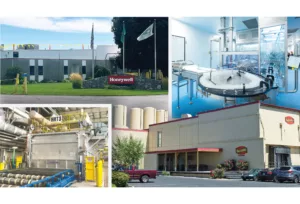Shifting demographics to force businesses to adapt
Number of people in their 40s, early 50s more than doubled in past 25 years
The number of Spokane County residents who are between the ages of 40 and 54 in Spokane County more than doubled between 1980 and 2005, far outdistancing growth in the number of residents in other age brackets, government statistics show.
Economists here say that as the growth of older groups of residents outstrips that of younger groups, a vast range of businesses could target the larger, older demographic more directly.
Its not a negative for business, but it will change the types of products and services that business will offer, says Grant Forsyth, associate professor of economics at Eastern Washington University. The market wont ignore these demographic changes.
Service businesses that might change product mixes to cater to the older clientele include restaurants, clothing stores, and entertainment venues, Forsyth says. Also, the health-care industry here is well-positioned to serve that demographic group, he says.
In 2005, the most recent year for which population-by-age estimates are available from the Washington state Office of Financial Management, 34,200 people between ages 45 and 49 lived in Spokane County, 119 percent more than 25 years earlier. In the 50-to-54 age range, 31,300 people lived here in 2005, or 100 percent more than 25 years ago. About 33,100 people between 40 and 44 lived in Spokane County, 99 percent more than in 1980.
In other age groups that grew in population, the percentage of growth was substantially less, ranging from 0.5 percent for the 20-to-24 group to 55.2 percent for the 55-to-59 age range. In two groups, the population fell between 1980 and 2005. The 25-to-29 group fell by 14 percent to 26,900, and the 30-to-34 group fell by 5 percent to 26,300.
With people on the older end of the 40-to-54 range getting closer to retirement, industries that serve seniors might see the potential for more opportunities, but economists here say those who serve retirees should consider a few additional factors.
The changing growth patterns among demographic groups will have other implications than in the targeting of customers by businesses, says Randy Barcus, chief economist at Avista Corp. For example, he says, peopleincluding both business owners and employersare working beyond the conventional retirement age of 65 more frequently than they did in the past.
In some cases, people continue to work because they want to do so, Barcus says. He says he talked recently with a small-business owner in his early 60s who had planned on retiring at age 65, but decided to push back retirement until 70 because his business is flourishing and his time largely is his own.
In other cases, however, people are remaining in the workplace because they dont have the financial wherewithal to retire, Barcus says. Some of those people lost wealth that they had in the stock market before it plunged beginning in 2001.
Forsyth says that as people near retirement, they might wish to continue working, but do so part time rather than full time. Its likely that employers will receive more requests in the future from workers who want to cut their hours, he says.
Another attribute of the next generation of retirees is that they are healthier and more active than previous generations were, Barcus says.
People today who are 60 are healthier than people in the earlier generation were when they were 50, he says.
Forsyth says many of the upcoming retirees will want accommodations that more closely reflect their current lifestyle.
A lot of these people arent poor, he says. Itll be interesting to see the retirement accommodations that come up for people who are relatively active and have money.
In the future
While one might assumeand correctly sothat the increased numbers in older age brackets are due to baby boomers growing older, it wouldnt be appropriate to assume that the cluster of people between 40 years old and 54 years old is the same group that made up the 15-to-29 group 25 years earlier, Barcus says. In that 25-year period, he says, a number of jobs have been created in the Inland Northwest, and many people have moved here from other regions for that work.
Barcus says most people who move for work do so between the ages of 20 and 40. Consequently, he expects the number of people here who are in their 20s and 30s to increase substantially as such residents take jobs that are being added in the Spokane area now.
By the time those people reach their 40s, their numbers will be equal to or somewhat greater than the numbers of baby boomers who are currently in those age brackets, although there isnt likely to be a noticeably large percentage increase like that seen in the 40s and early 50s age ranges during the previous 25-year period, Barcus says.
Also, as people who are in their 40s and 50s get older, the number of people in those groups in Spokane County could grow due to in-migration for retirement, rather than for work. Forsyth says the Inland Northwest has a lot of attributes that new retirees might find attractive, including reasonable cost of living, a four-season climate, and access to health care.
Twenty-five years from now, the two economists say, each of the groups likely will have comparable numbers of people in them and their rates of growth likely will be more uniform.
By then, Barcus says, most of the people born in the 1930s and 1940s will have died, and all of the boomers will be over 60. The birth rate has declined in recent years, both in Spokane and nationally, but remains ahead of the death rate, so population will continue to grow gradually.
Those forecasts assume that there wont be any dramatic changes in birth rates. Such changes generally occur only in times of significant national events, Barcus says. For example, he says, the birth rate decreased during the Great Depression of the late 1920s and 1930s. Also, birth rates dropped during World War II, but exploded after the war ended, and soldiers returned home.
Contact Linn Parish at (509) 344-1266 or via e-mail at [email protected].
Related Articles


_c.webp?t=1763626051)

_web.webp?t=1764835652)
